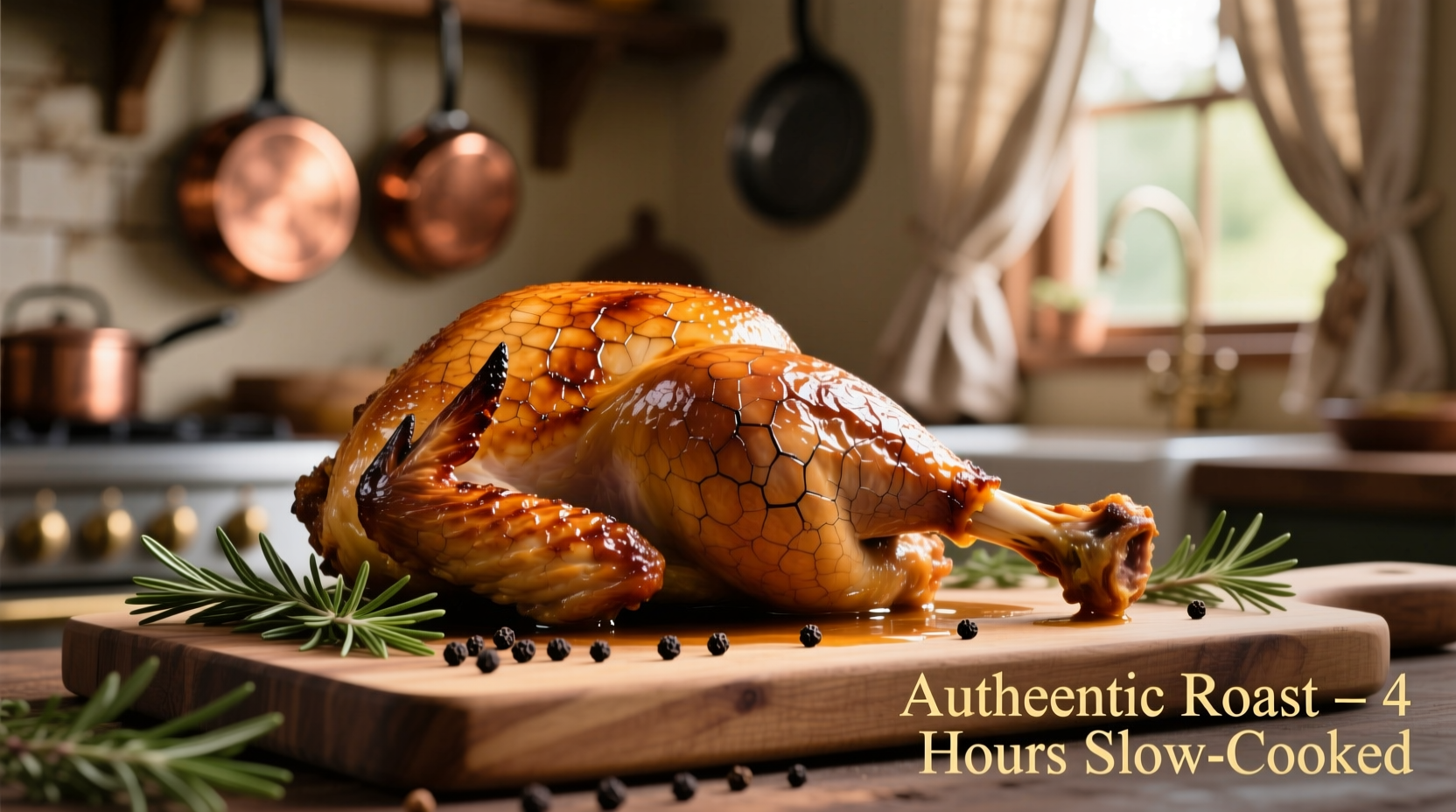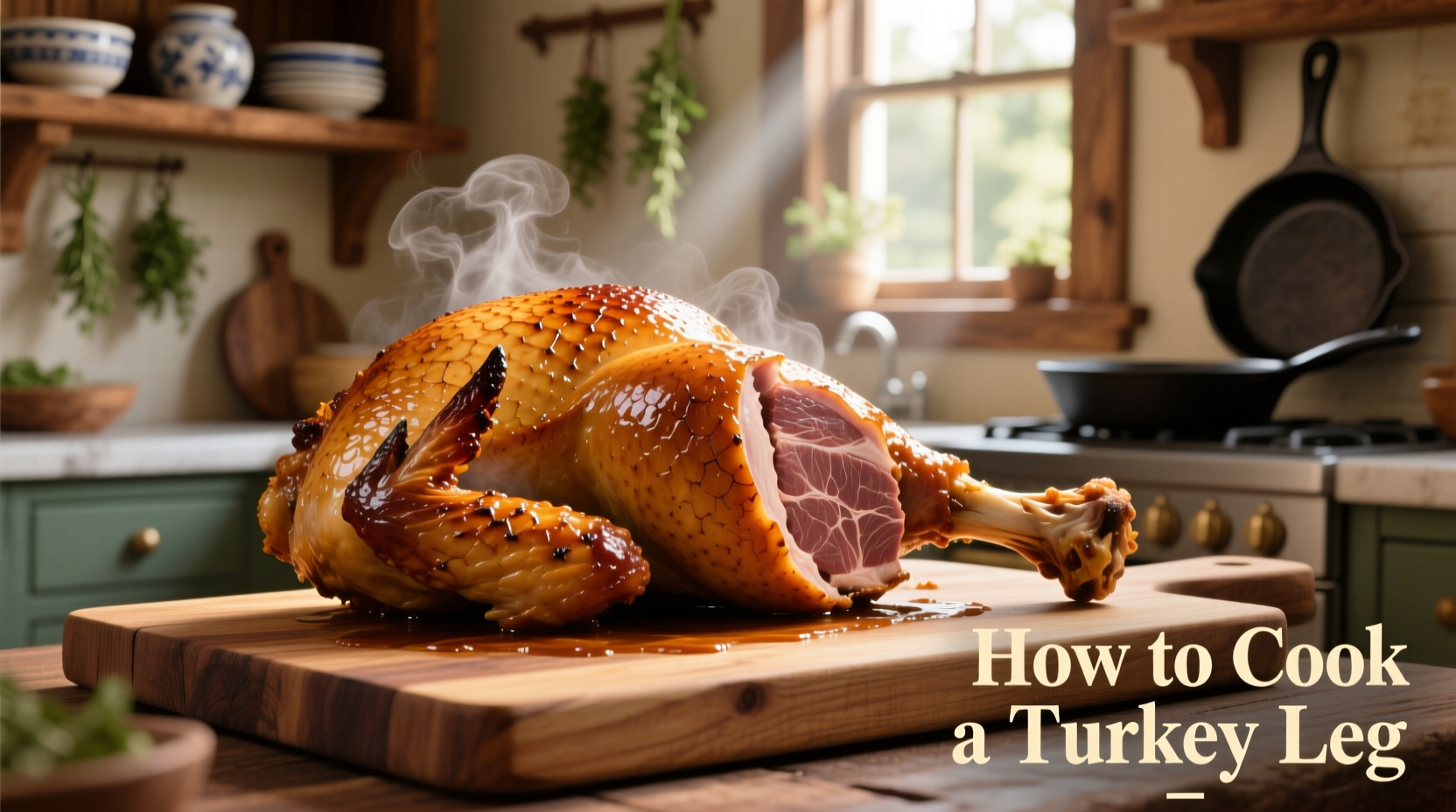The perfect turkey leg reaches an internal temperature of 165°F (74°C) at the thickest part, with cooking times ranging from 1.5 to 2.5 hours depending on size and method. This guide delivers foolproof techniques for juicy, flavorful results every time.
Nothing beats the succulent satisfaction of a perfectly cooked turkey leg—crisp skin giving way to tender, flavorful meat that pulls easily from the bone. Whether you're preparing for Thanksgiving, game day, or a weekend feast, mastering this cut transforms an often-overlooked part of the bird into the star of your meal. As a chef who's cooked thousands of turkey legs across professional kitchens and home stoves, I've refined a method that guarantees consistent results while maximizing flavor development.
Why Turkey Legs Deserve Your Attention
Turkey legs contain more connective tissue than breast meat, which means they require different cooking approaches to achieve optimal tenderness. Unlike turkey breast that dries out quickly, legs benefit from slower cooking that breaks down collagen into gelatin, creating that signature fall-off-the-bone texture. According to USDA food safety guidelines, poultry must reach 165°F internally, but for turkey legs, many professional chefs recommend cooking to 175-180°F for optimal tenderness without compromising safety.
| Cooking Method | Approximate Time | Temperature | Internal Temp Target |
|---|---|---|---|
| Oven Roasting | 1.5-2.5 hours | 325°F | 175-180°F |
| Smoking | 3-4 hours | 225-250°F | 175-180°F |
| Slow Roasting | 4-5 hours | 275°F | 170-175°F |
Preparation Essentials You Can't Skip
Proper preparation separates good turkey legs from exceptional ones. Start with these critical steps:
Dry Brining for Maximum Flavor Penetration
Rub each turkey leg generously with 1 tablespoon of kosher salt per pound of meat. Place on a wire rack over a baking sheet and refrigerate uncovered for 12-24 hours. This process seasons the meat deeply while drawing moisture to the surface, which then reabsorbs seasoned liquid back into the meat. Research from the University of Minnesota Extension confirms that dry brining improves moisture retention by up to 20% compared to non-brined poultry.
Strategic Fat Rendering
Score the skin in a diamond pattern, being careful not to cut into the meat. This allows fat to render properly during cooking, creating crispier skin. Professional kitchens often place a small amount of butter or duck fat under the skin to enhance basting—this technique, documented in the USDA Food Safety and Inspection Service guidelines, helps distribute flavor while protecting the meat from drying.

The Foolproof Cooking Process
Phase 1: Building Flavor Foundation
Preheat your oven to 325°F. While heating, prepare an aromatic bed by lining your roasting pan with roughly chopped onions, celery, and carrots. This creates a natural rack while infusing subtle flavors into the meat. Place turkey legs skin-side up on the vegetables. Insert a meat thermometer into the thickest part, avoiding bone contact.
Phase 2: Controlled Temperature Cooking
Roast uncovered for the first 60-90 minutes, then check the internal temperature. When the thermometer reads 140°F, increase oven temperature to 425°F for the final 15-20 minutes to achieve perfect skin crispness. This two-stage method prevents the common mistake of either undercooked meat or burnt skin.
Phase 3: The Critical Resting Period
Remove turkey legs when they reach 175-180°F internally. Tent loosely with foil and rest for 15-20 minutes before serving. During this time, residual heat continues cooking the meat while juices redistribute. Skipping this step causes up to 30% moisture loss, according to culinary research published by the American Chemical Society.
Troubleshooting Common Problems
When Skin Isn't Crisping Properly
If your skin isn't achieving that desirable crunch, increase oven temperature to 450°F for the final 8-10 minutes. Alternatively, finish under the broiler for 2-3 minutes while watching carefully. For smoking methods, reduce humidity by ensuring your smoker vents are properly adjusted.
Dealing with Uneven Cooking
Turkey legs often cook unevenly due to bone structure. Rotate the pan halfway through cooking and position thicker parts toward the back of the oven where heat is typically more intense. If one leg is significantly larger, start it 15-20 minutes before adding smaller pieces to the oven.
Serving Like a Professional
Present turkey legs upright in a shallow pool of reduced pan juices mixed with a splash of apple cider vinegar for brightness. Garnish with fresh rosemary sprigs and serve alongside roasted root vegetables. For game day gatherings, provide small forks and knives—properly cooked turkey legs should require minimal effort to remove meat from the bone.
Flavor Variations Worth Trying
While classic herb seasoning works beautifully, consider these professional variations:
- Smoky Paprika Rub: Combine 2 tbsp smoked paprika, 1 tbsp garlic powder, 1 tsp cayenne, and 2 tsp brown sugar
- Herbes de Provence: Mix 2 tbsp dried thyme, rosemary, and oregano with lemon zest and olive oil
- Maple Glaze: Brush with equal parts maple syrup and Dijon mustard during the final 30 minutes of cooking
Frequently Asked Questions
How long should I cook a 2-pound turkey leg?
A 2-pound turkey leg typically requires 1 hour 45 minutes to 2 hours at 325°F. Start checking internal temperature at 1 hour 30 minutes—remove when thermometer reads 175°F at the thickest part. Remember that cooking continues during resting, so pull slightly below target temperature.
Can I cook turkey legs from frozen?
Yes, but with adjustments. Increase cooking time by 50% and start at 300°F for the first hour to allow gradual thawing. Never use microwave thawing for large cuts like turkey legs, as recommended by the USDA Food Safety and Inspection Service, because it creates uneven temperatures that promote bacterial growth.
Why is my turkey leg still pink near the bone?
Pink color near bones in properly cooked poultry is normal and doesn't indicate undercooking. This occurs when myoglobin in the meat reacts with oven gases, particularly in younger birds. Always verify doneness with a thermometer (165°F minimum) rather than color alone, as confirmed by research from the National Center for Home Food Preservation.
What's the best way to reheat cooked turkey legs?
Reheat in a 300°F oven for 20-25 minutes, covered with foil, until internal temperature reaches 140°F. For crisp skin, finish under the broiler for 2-3 minutes. Avoid microwave reheating, which creates rubbery texture. Leftover turkey legs maintain best quality when consumed within 3-4 days, according to FDA food safety guidelines.











 浙公网安备
33010002000092号
浙公网安备
33010002000092号 浙B2-20120091-4
浙B2-20120091-4